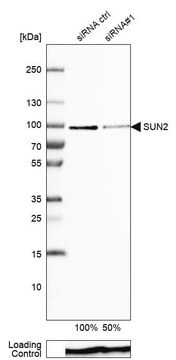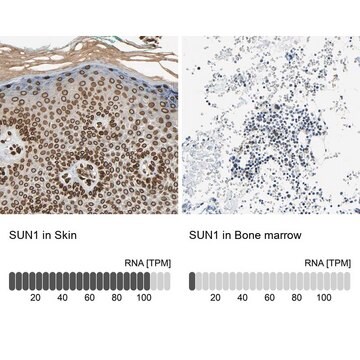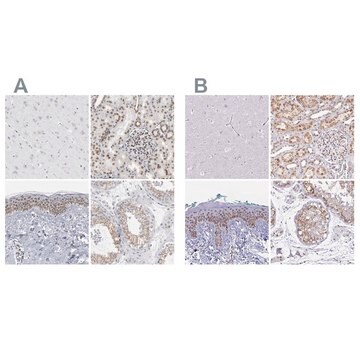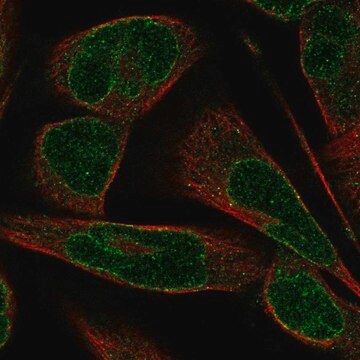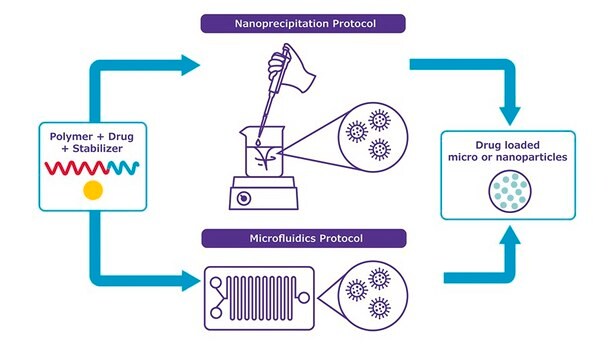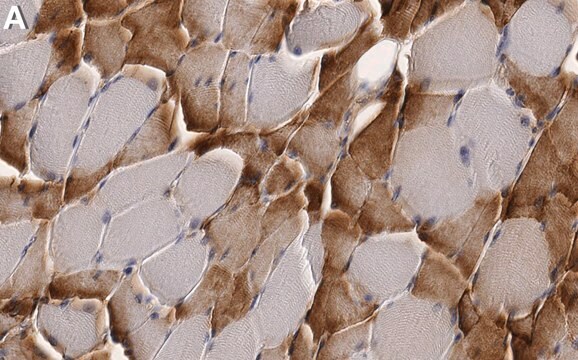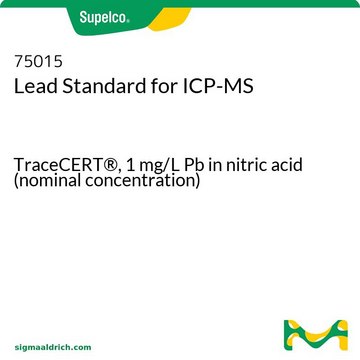MABC86
Anti-Nesprin-2 Antibody, clone K20-478
clone K20-478, from mouse
Synonym(s):
Nesprin-2, Nuclear envelope spectrin repeat protein 2, Nucleus and actin connecting element protein, Protein NUANCE, Synaptic nuclear envelope protein 2, Syne-2
About This Item
Recommended Products
biological source
mouse
Quality Level
antibody form
purified immunoglobulin
antibody product type
primary antibodies
clone
K20-478, monoclonal
species reactivity
human, mouse
technique(s)
immunocytochemistry: suitable
immunoprecipitation (IP): suitable
western blot: suitable
isotype
IgG2bκ
NCBI accession no.
UniProt accession no.
shipped in
wet ice
target post-translational modification
unmodified
Gene Information
human ... SYNE2(23224)
General description
Immunogen
Application
Immunoprecipitation Analysis: A representative lot from an independent laboratory immunoprecipitated Nesprin-2 in HA-MKS3 transfected HEK293 whole cell extracts. Immunoprecipitated sample was then subjected to Western Blotting using the same representative lot of antibody (Dawe, H. R., et al. (2009). J Cell Sci. 122(Pt 15): 2716-2626.).
Western Blotting Analysis: A representative lot from an independent laboratory detected Nesperin-2 in IMCDE whole cell extracts. High levels of a 25 kDa ABD-containing isoform was observed only at post-confluence (+72 hours); however, a second major ABD-containing isoform was observed at 55 kDa before and after confluence (Dawe, H. R., et al. (2009). J Cell Sci. 122(Pt 15): 2716-2626.).
Dylight® is a registered trademark of Thermo Fisher Scientific. Alexa Fluor is a registered trademark of Molecular Probes, Inc.
Cell Structure
Cytoskeleton
Quality
Western Blotting Analysis: 0.5 µg/mL of this antibody detected Nesprin-2 in 10 µg of COS-7 cell lysate.
Target description
Physical form
Storage and Stability
Other Notes
Legal Information
Disclaimer
Not finding the right product?
Try our Product Selector Tool.
Storage Class Code
12 - Non Combustible Liquids
WGK
WGK 1
Flash Point(F)
Not applicable
Flash Point(C)
Not applicable
Regulatory Listings
Regulatory Listings are mainly provided for chemical products. Only limited information can be provided here for non-chemical products. No entry means none of the components are listed. It is the user’s obligation to ensure the safe and legal use of the product.
JAN Code
MABC86:
Certificates of Analysis (COA)
Search for Certificates of Analysis (COA) by entering the products Lot/Batch Number. Lot and Batch Numbers can be found on a product’s label following the words ‘Lot’ or ‘Batch’.
Already Own This Product?
Find documentation for the products that you have recently purchased in the Document Library.
Our team of scientists has experience in all areas of research including Life Science, Material Science, Chemical Synthesis, Chromatography, Analytical and many others.
Contact Technical Service